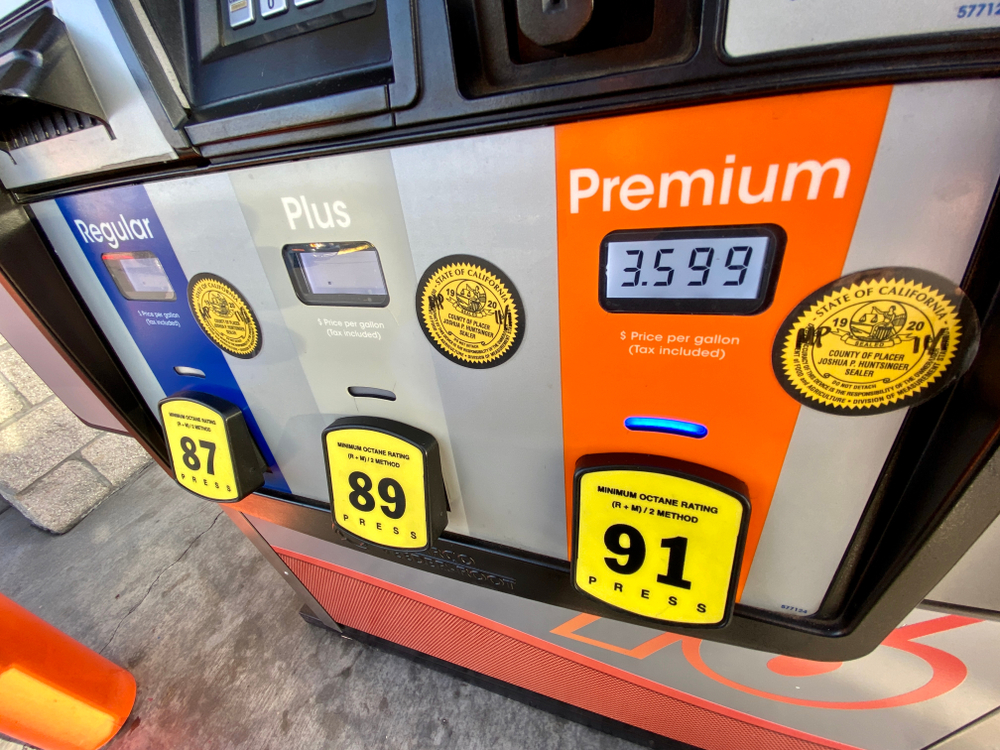
When it comes to fueling up your car, and you’re at the gas station pump looking at the different grades of gasoline, trying to decide between premium and regular; do you know the real difference between the two? Being a driver who understands the disparities in price, performance, and overall costs between the two can help you determine which type of gas is right for your vehicle.
It’s one of the many decisions to be made, like finding the right car insurance, that comes with being a car owner, which can contribute to a safer and smoother ride, and maybe even save you extra money in the long run.
Is Premium Gas Better Than Regular?
One common misconception is that premium gas is always superior to regular. The good news for your wallet is this assumption is not entirely true. The primary factor that distinguishes premium and regular gasoline is the octane rating, which indicates the fuel’s resistance to engine knocking. Engine knock, also known as pinging or detonation, occurs when the air-fuel mixture in the engine’s cylinders ignites prematurely or unevenly. Instead of the smooth and controlled combustion that should occur, the fuel-air mixture explodes abruptly, creating a knocking or pinging noise.
Premium gas typically boasts a higher octane rating, making it suitable for high-performance engines, while regular unleaded gas is designed for standard engines. It’s important to note that using premium gas in an engine that only requires regular won’t provide any additional benefits.
Differences in Octane Levels
Octane levels play a vital role in your vehicle’s performance. Premium gasoline generally has an octane rating of 91 or higher, while regular gas typically falls within the range of 87 to 89 octane. Engines with higher compression ratios require higher octane fuel to prevent knocking, which can potentially harm the engine. However, if your vehicle’s manufacturer recommends regular gas and your car has a low compression engine, there’s no need to spend extra on premium.
Price Comparison
Price is a critical consideration when choosing between premium and regular gasoline. Premium gas tends to be pricier per gallon due to its higher octane rating and the additional refining processes involved in its production. While premium gas may offer certain benefits for specific vehicles, such as enhanced acceleration and power, it’s important to evaluate whether these advantages justify the additional expense, especially if you’re one of the many drivers who are already taking advantage of reduced costs associated with your car like discounts on car insurance.
Performance Comparison
Performance is often a significant factor in the decision-making process. High-performance engines, such as those found in sports cars or luxury vehicles, are specifically designed to take full advantage of the extra octane present in premium fuel. If you own such a vehicle, using premium gas may result in improved acceleration, power, and contribute to peak performance. However, for standard vehicles, regular gas provides sufficient performance without any drawbacks.
Fuel Economy Comparison
Another aspect to consider is fuel economy. While premium gas might offer marginal improvements in fuel efficiency for specific high-performance engines, it also comes with premium costs. The marginal improvements premium gas offers, though, are often negligible for the majority of cars. It’s important to note that individual driving habits like driving slower, vehicle maintenance, and overall condition have a more substantial impact on fuel economy than the type of gasoline used.
Bear in mind, also, that some specific models of cars are gas guzzlers if better fuel economy is a key factor for you when owning a car. Overall, ensuring your vehicle is properly maintained and adopting fuel-efficient driving techniques are often more effective in maximizing fuel economy.

Impact on Vehicle Longevity
The long-term effects of using premium or regular gasoline on your vehicle’s longevity are minimal. As long as you adhere to the manufacturer’s recommendations and use the appropriate type of fuel, your engine will remain in good condition. Using regular fuel in a vehicle that requires premium may result in knocking, reduced performance, and potential engine damage. Conversely, using premium gas in a vehicle that only requires regular won’t provide any additional benefits. Always follow the manufacturer’s guidelines for optimal engine performance and longevity.
Pros and Cons
To summarize the pros and cons of premium and regular gasoline, premium fuel offers improved performance for high-performance engines but comes at a higher cost. Regular gas, on the other hand, is suitable for most standard modern engines and provides satisfactory performance without the extra expense. It’s important to consider your vehicle’s specifications, manufacturer recommendations, and your own driving habits when making a decision.
Which Gasoline Type is Right for Your Vehicle?
When determining the appropriate type of gasoline for your vehicle, start by consulting your vehicle’s manufacturer recommendations, usually in the owner’s manual. These guidelines provide valuable insights into the specific fuel requirements of your engine, ensuring optimal performance and minimizing the risk of engine damage or inefficiency. The guidelines, of course, will be determined by what type of engine your car has. Following the manufacturer’s recommendations is key, as they have tested and designed the engine of each specific car to perform optimally with a particular fuel type.
Making a Decision Based on Individual Factors
Apart from manufacturer recommendations, several individual factors can influence your decision. Consider the type of vehicle, its age, model, and weight as determining factors when choosing between premium and regular gasoline. High-performance vehicles or those equipped with turbocharged engines often require premium gas to deliver their intended performance. However, for standard vehicles with regular engines, regular gas is typically sufficient to meet their needs.
What Happens if You Mix Premium and Regular Gas?
In the event of accidentally mixing premium and regular gasoline, there’s no need to panic. Your vehicle’s engine management system is designed to handle varying fuel octane levels. However, for the best performance, avoid mixing the two types regularly. Stick to using one type of gasoline consistently to ensure consistent fuel quality and performance.
Can I Switch from Regular to Premium Gas?
Switching from regular to premium gas is generally safe if your vehicle’s manufacturer recommends or permits it. However, keep in mind that unless your engine requires premium fuel, you won’t experience a significant performance boost. If you decide to switch, plan to consistently fill up with premium gasoline to avoid any potential issues that may arise from mixing different fuels.
Making the Right Choice for You and Your Vehicle
Gaining a comprehensive understanding of the differences between premium and regular gasoline already puts you ahead of most drivers on the road, and it empowers you to make an informed decision based on budget or desired driving experience. Take into account your vehicle’s specifications, manufacturer recommendations, octane requirements, and individual factors such as the type of vehicle and your driving habits before filling up at the pump.
While making the right choice of gas for your car is important for your budget’s bottom line, consider talking to your independent agent at Freeway Insurance can also save you money with cheap auto insurance. Call us at (800) 777-5620 or get a quick quote online. You can also find an office location near you to speak directly with a Freeway Insurance agent.



